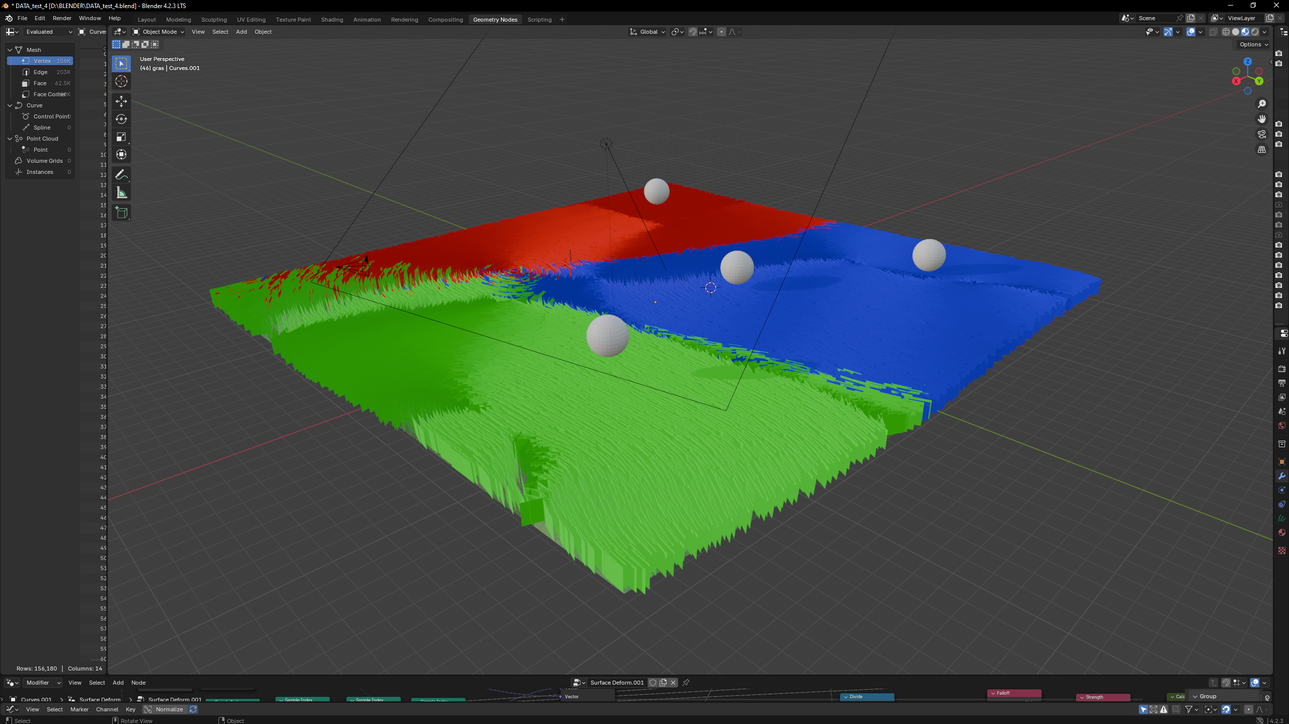In a geometry node thing i'm making there is a part where i change the texture of the planes based on wich objects in the different collections is closer and it mostly works. Each object also has a falloff parameter (determines how quick the transition to other colors is) and when 2 objects in a collection have 2 different falloff values the planes in between them dont pick the highest value because they are closer to the 'weaker' object. How can i get the highest influence value of all the objects in the collection. (If for example an object closer to a plane has after calculating it based on the distance an influence of 1 and one further away has an influence of 3 because it has a higher 'strength' it should return 3)
here are some pictures of what i have now (the 2 spheres in the middle are for the blue texture and as you can see there is a line between them because the left one has a smaller falloff which causes the planes closer to the middle of the 2 to have a lower value than if the left sphere wouldnt be there)
I tried to just put an index node in the sample index nodes instead of the sample nearest together with an attribute statistic node to get the max calculated value for each point but i couldn't get that to work.
I hope i make some sense and thanks in advance.
This is how it should sort of look like when it is working properly ↓







